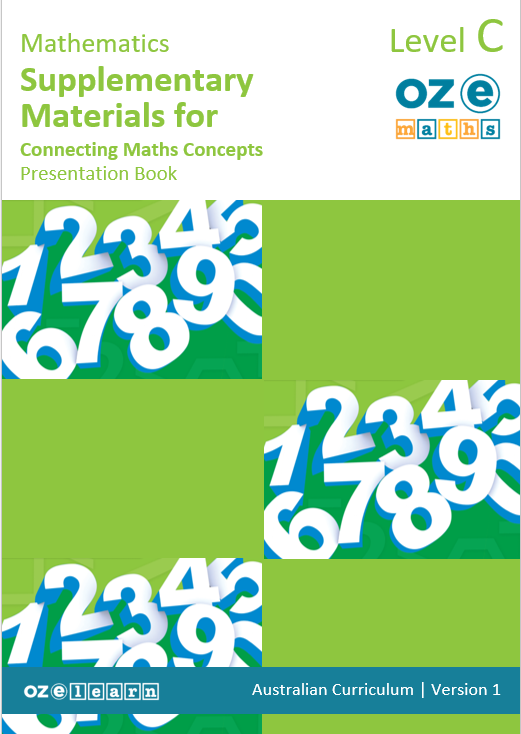Oz-e-maths Supplementary Materials for Connecting Maths Concepts Years F-5

In Lesson 3 (CMC Level C: Lesson 31-40), students learn to:
In Lesson 4 (CMC Level C: Lesson 51-60), students learn to:- know that two-digit numbers are comprised of tens and ones
- use pictorial MABs to demonstrate that three-digit numbers are comprised of hundreds, tens, and ones/units
- show that three-digit numbers are comprised of hundreds, tens, and ones/units
- demonstrate three-digit numbers are comprised of hundreds, tens, and ones/units.
- describe skip counting and the pattern of counting by 2s
- use counting by 2s to count a collection of objects
- represent skip counting by 2s on a number line, identifying the missing number
- describe the 2s skip counting pattern beyond 100
- describe the pattern of skip counting by 5s
- use skip counting by 5s to represent the pattern
- use skip counting by 10s to represent the pattern and identify the missing number.
In lesson 5 (CMC Level C: Lessons 91-100), students learn to:
- describe the effect of a one-step slide
- identify a one-step slide
- describe the effect of a flip
- identify a flip or slide
- investigate the effect of flips by moving and drawing shapes
- demonstrate the effect of slides and flips by drawing irregular shapes.
In Lesson 6 (CMC Level C: Lesson 101-110), students learn to:
- identify and describe half and quarter turns
- demonstrate a half turn and quarter turn to create a pattern.
In the Swap-Outs, students learn to:
- identify and count Australian coins
- apply ruler skills to measure length
- use a ruler to count backwards
- to solve comparison word problems.

